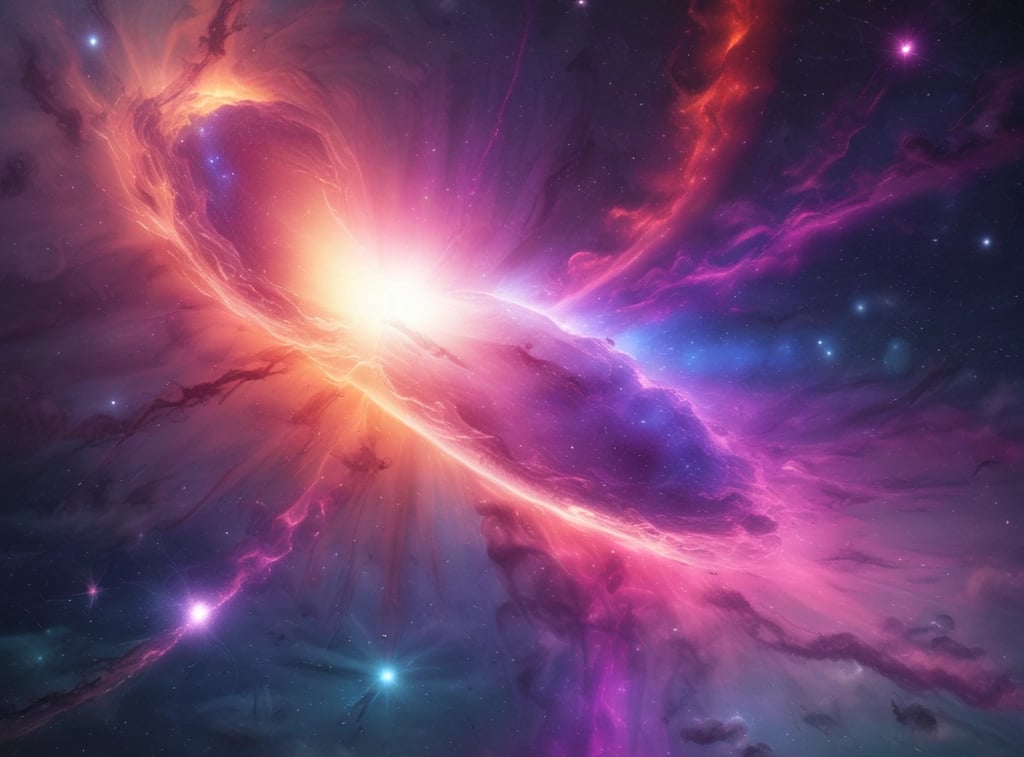Cosmic Alchemy: How Gold Was Formed in the Early Universe
Lew Marcrum
4/13/20253 min read


Cosmic cataclysm: The birth of gold.
Origin of Gold
“In the beginning God created the heavens and the earth. And the earth was without form, and void, and darkness was upon the face of the deep...And God said 'Let there be light!'”
Most modern cosmologists agree that before fifteen billion years ago there was no universe. There was no space. There was no time. There was no light. There was only darkness and gravity. Somewhere between fifteen and fourteen billion years ago there occurred an incomprehensibly large explosion creating a bubble of energy and light which expanded for a short time far faster than the speed of light because the natural physical laws of the universe had not yet been formed. Soon gravity took hold and became a regulator for all matter newly created.
Over the next few billion years raw energy formed into subatomic particles, electrons, protons and neutrons, and many others, and being attracted and repelled by their own electromagnet charges, eventually formed the first atoms and elements. Hydrogen, the simplest atom, was formed in great over-abundance, also Helium, Oxygen, Nitrogen and all elements up to and including Iron. The processes that created these elements was not powerful enough to create any elements of greater atomic weight than Iron, so Gold, Silver, Platinum, Uranium, Lead and all other heavy elements did not exist for the next few billions of years.
During this waiting time gravity collected some of the abundant Hydrogen into masses, then into dense gas balls. When these gas spheres became big enough their internal pressure and heat set off an atomic fusion process at the core, and stars were born. Soon the universe was filled with shining lights.
Stellar Nucleosynthesis: The Birth of Elements
Gold, along with other heavier elements, is primarily formed through a process known as stellar nucleosynthesis within stars. When stars exhaust their hydrogen fuel, they undergo complex fusion reactions, creating heavier elements. It is only in the cores of massive stars, under extreme temperatures and pressures, that elements heavier than iron can be synthesized.
Over time many stars aged and died. Some merely twinkled out, but others erupted in the greatest explosions in the universe other than the Big Bang itself: the super-nova. After the first super-nova all the natural elements, including gold, were born and blasted out into the universe as millions and billions of stars died in fiery explosions. During the explosive death of a massive star these heavy elements, including gold, are scattered across the universe, enriching the interstellar medium.
Neutron Star Mergers
While stellar nucleosynthesis plays a significant role in the creation of gold, recent research suggests that neutron star collisions are equally essential in generating this precious metal. When two neutron stars collide, they produce a cataclysmic explosion known as a kilonova. During this event, an immense amount of neutron-rich material is ejected, creating heavy elements through rapid neutron capture processes, referred to as the r-process.
The kilonova associated with neutron star mergers has been shown to produce significant quantities of gold—potentially enough to account for a substantial portion of the gold present in our universe. This means that the gold within our wedding rings or electrical gadgets may have originated from these colossal cosmic events, linking us to the grand narrative of stellar evolution and the cosmic cycle of life and death.
Gold in Our World: From Cosmic Origins to Earth
The journey of gold does not end in the stars. Once these heavy elements were formed, they eventually became part of the gas and dust clouds that collapsed to create new stars and planets, including Earth. During Earth's formative period untold billions of tons of extraterrestrial rocks and heavy metal meteorites bombarded the planet. Over billions of years, geological processes have concentrated gold deposits, making them accessible for mining and extraction.
Understanding how gold was formed provides a deeper appreciation of this element and its significance. From its inception in cosmic events to its eventual presence on Earth, gold's origins highlight the interconnectedness of the universe. The next time you gaze at a gold object, remember that it is more than just a metal; it is a reminder that each piece of gold carries with it a piece of our universe's history, connecting humanity to the stars.